Your feedback: results of the 2020 IVVN members' survey
Earlier this year, we conducted a survey of IVVN members using an online questionnaire platform (Online Surveys by Jisc). Members were sent the link to the survey with the IVVN newsletter in February, March and April 2020, and twice in a direct email. A total of 241 members – around a fifth of the membership at the time – filled out the questionnaire over the two months it remained open.
The survey’s respondents worked in 57 countries, with the UK (39 respondents), Nigeria (27), South Africa (12), India (11) and Kenya (10) the five best-represented countries. 172 (71%) worked in a low- or middle-income country (LMIC; classed as least developed, other lowincome, lower middle-income or higher middle-income by the World Bank), slightly higher than the IVVN membership as a whole (65%). 58% of respondents identified as male and 41% as female – similar to the estimated gender ratio of IVVN membership (61% male and 39% female). These demographic details are summarised in Figure 1 below.
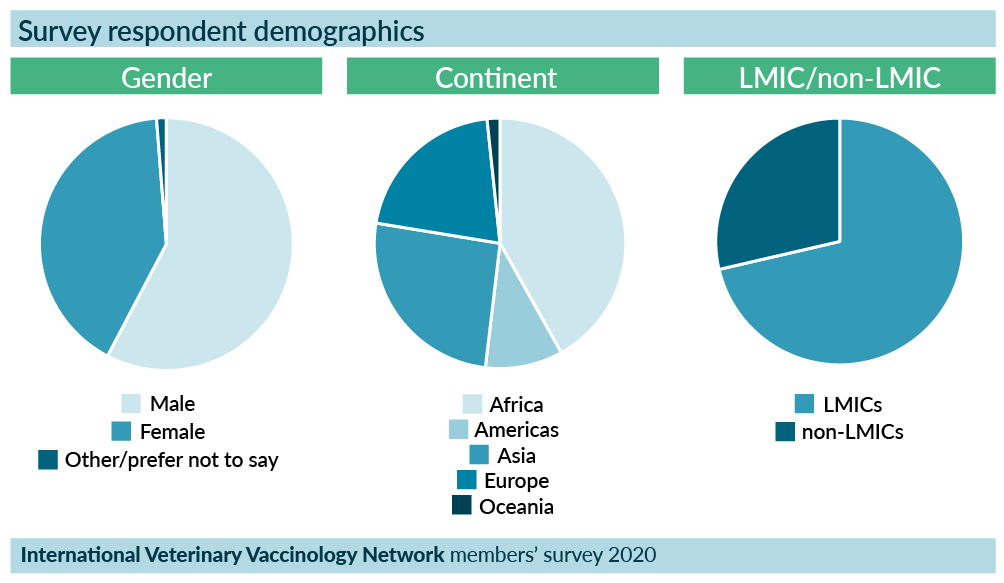
Figure 1 Survey respondents’ gender, continent (United Nations geoscheme) and whether or not they work in a low- or middleincome country (according to the World Bank)
What are the greatest professional challenges and barriers that have negatively affected your scientific research?
When we last surveyed the IVVN membership, one of the questions that gave us the greatest insight into how members felt was one about the challenges and barriers they have faced in their research. We asked the same question this year, which confirmed 2018’s results (Figure 2).
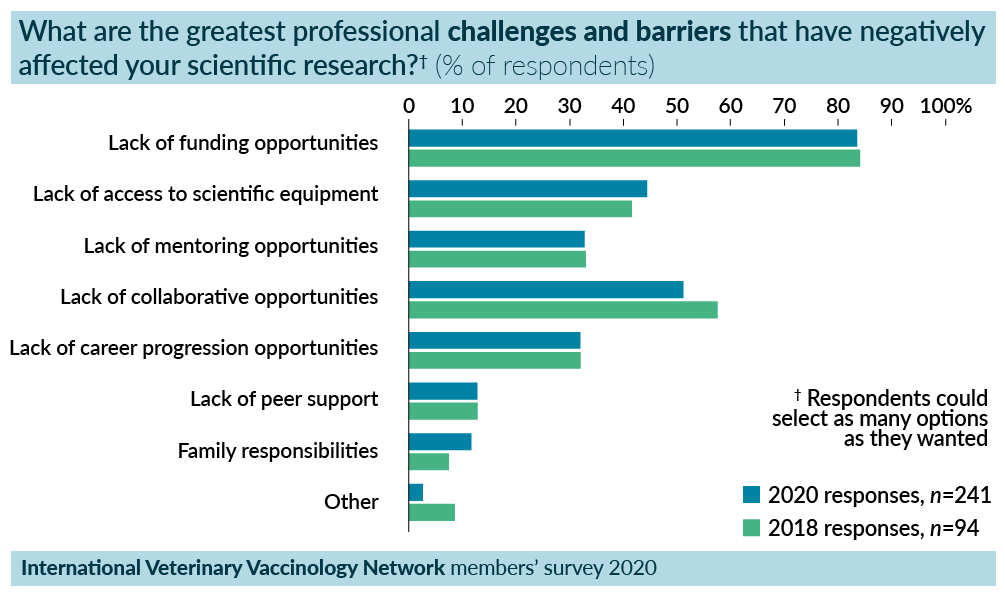
Figure 2 All responses to the question “What are the greatest professional challenges and barriers that have negatively affected your scientific research?” from the 2020 and 2018 members’ surveys.
Many of these options reflect areas the IVVN is currently working to address, while others relate to possible future activities. Perhaps unsurprisingly, funding was the most commonly cited barrier and, although we continue to try to make as much funding as possible available for scientific research, this is likely to remain a barrier.
Many of the challenges were particularly felt by respondents from LMICs (Figure 3). 55% of LMIC-based respondents described a lack of access to scientific equipment as a professional barrier – much more than the 17% from high-income countries (HICs). This supports the case for the proposed IVVN equipment exchange programme, which will repurpose unused equipment for use in LMIC laboratories.
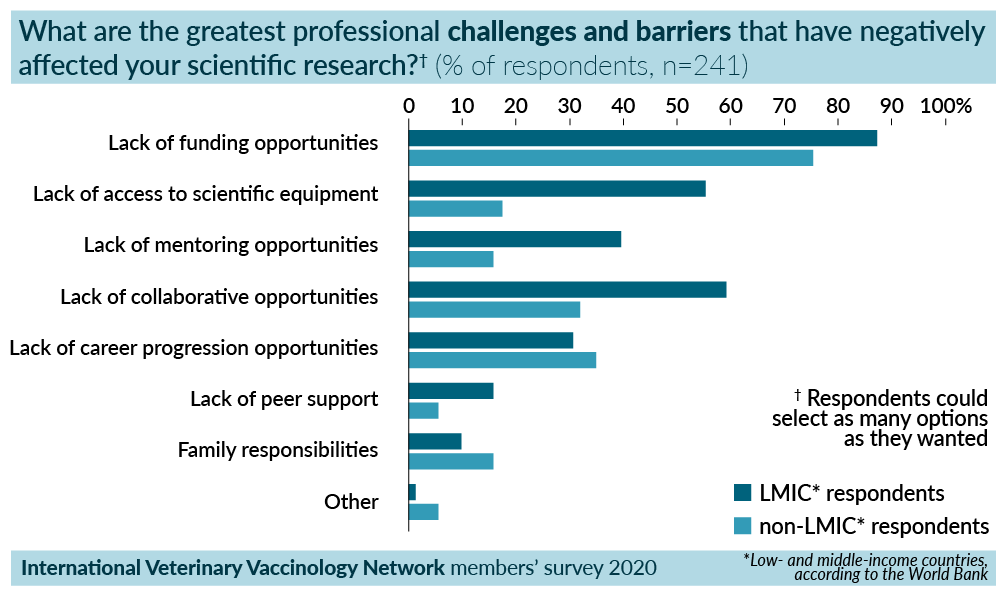
Figure 3 Responses to the question “What are the greatest professional challenges and barriers that have negatively affected your scientific research?” weighted according to whether or not respondents worked in an LMIC.
LMIC respondents also disproportionately identified a lack of mentoring opportunities and a lack of collaborative opportunities as barriers. The latter challenge is something the IVVN members’ directory aims to address by improving the ease with which members’ can find collaborators for their research. Recent and future improvements to how the directory works, such as the introduction of expertise-based filters, will hopefully address this further.
Women from LMICs were the most likely group to identify a lack of mentoring opportunities as a challenge, with 47% of the survey’s 73 LMIC-based female respondents selecting this option (Figure 4). The new IVVN Fellowship programme, which aims to provide mentors for female postdoctoral researchers from LMICs, will hopefully begin to address this.
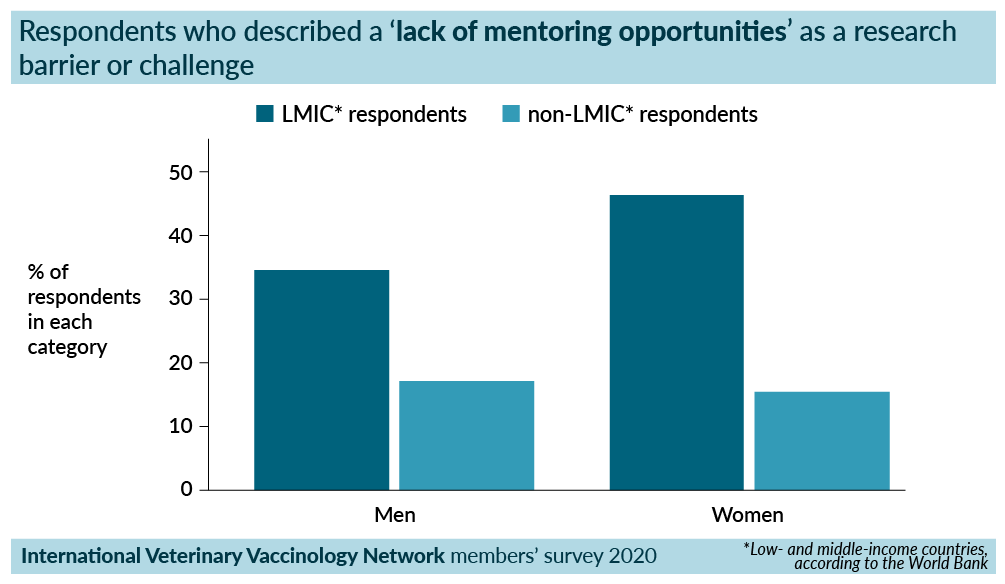
Figure 4 Respondents who selected ‘lack of mentoring opportunities’ in response to the question “What are the greatest professional challenges and barriers that have negatively affected your scientific research?” weighted by gender and by the World Bank income levels of the countries where respondents work (low- and middle income countries and high-income countries).
Female respondents from high income countries were more likely to identify a lack of career progression opportunities as a barrier, with 58% of the survey’s 26 HIC-based female respondents selecting this option (Figure 5), compared with just 32% across all respondents. This reflects a widely-identified problem in science and suggests that, although effort is being made to address this, female scientists’ career progression remains an issue that needs to be addressed.
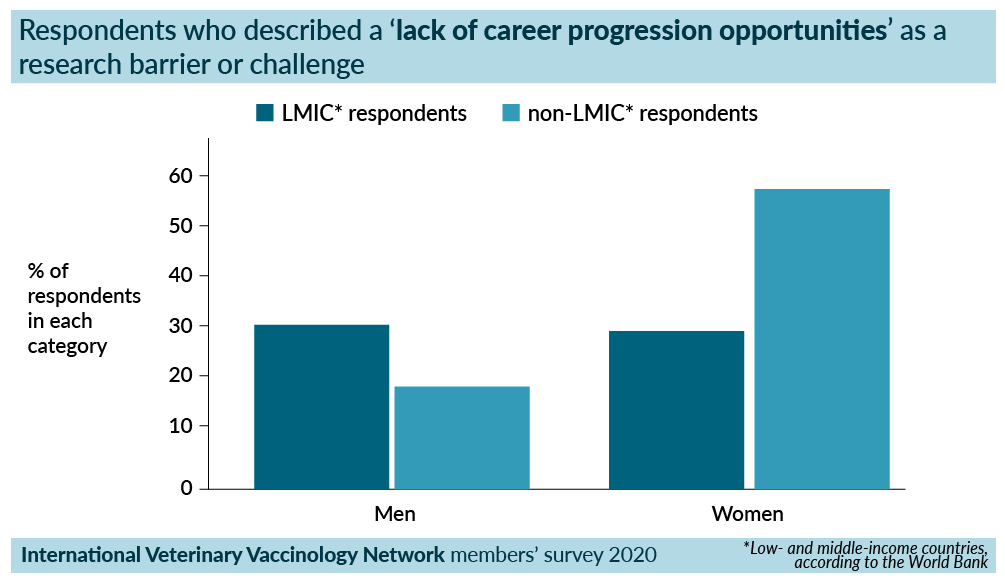
Figure 5 Respondents who selected ‘lack of career progression opportunities’ in response to the question “What are the greatest professional challenges and barriers that have negatively affected your scientific research?” weighted by gender and whether or not respondents worked in an LMIC.
Satisfaction with IVVN funding application processes
The survey asked respondents whether or not they had applied for IVVN catalyst funding. 21% had applied – 6% successfully. Those who had applied were then asked about their satisfaction with the application process (Figure 6). Most were either completely or somewhat satisfied with each of the five aspects we asked about (finding collaborators, how easy it was to fill out the application, the communication they received from the IVVN team, the feedback they got on their applications and their overall experience). However, a third of unsuccessful applicants were dissatisfied with the process of finding suitable collaborators, which again highlights that this is a barrier to many scientists’ research. 21% of unsuccessful applicants were also dissatisfied with the feedback they received, which is something the Network could consider for future funding rounds.
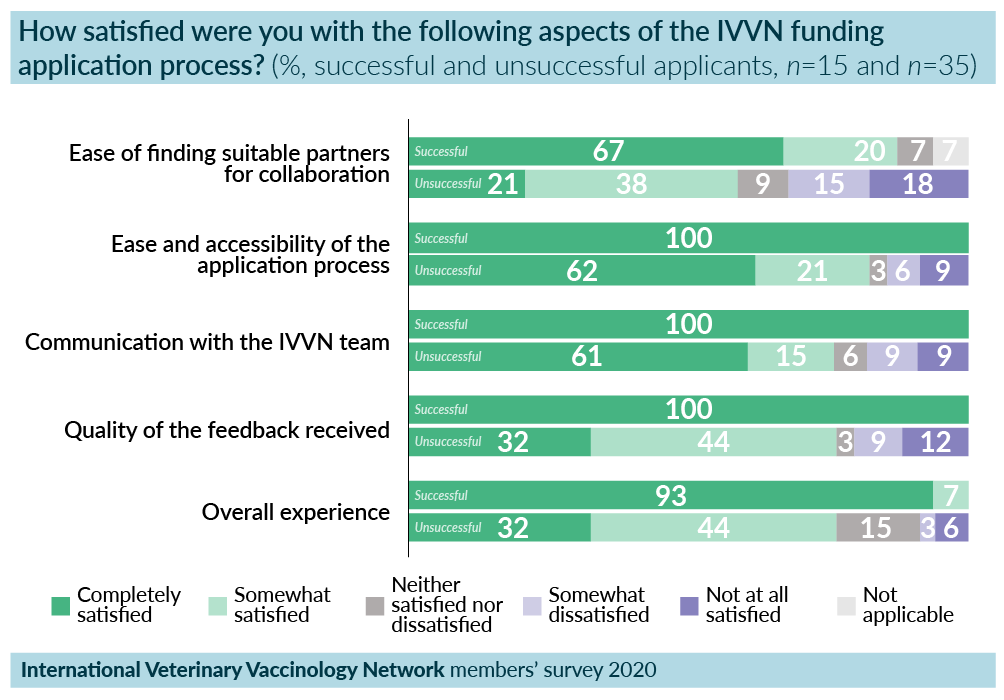
Figure 6 All responses to the question “How satisfied were you with the following aspects of the IVVN funding application process?” with percentages of successful and unsuccessful applicants who chose each option shown. Respondents could show their satisfaction on a five-point scale between ‘completely satisfied’ and ‘not at all satisfied’.
We asked the rest of the applicants why they had not applied for IVVN funding and, again, a lack of collaborative opportunities was the biggest single issue (Figure 7). However, many respondents also said they lacked experience in writing funding applications (31%) or were unaware of the IVVN’s funding opportunities (28%). A lack of grant writing experience is something the Network has previously tried to address with a workshop, but this is something we could consider re-running on a larger scale. This question also saw a considerable number (17%) selecting the ‘other’ option. This largely reflected respondents who did not work in research, and so a ‘not applicable’ option will be included should this question be asked in future surveys.
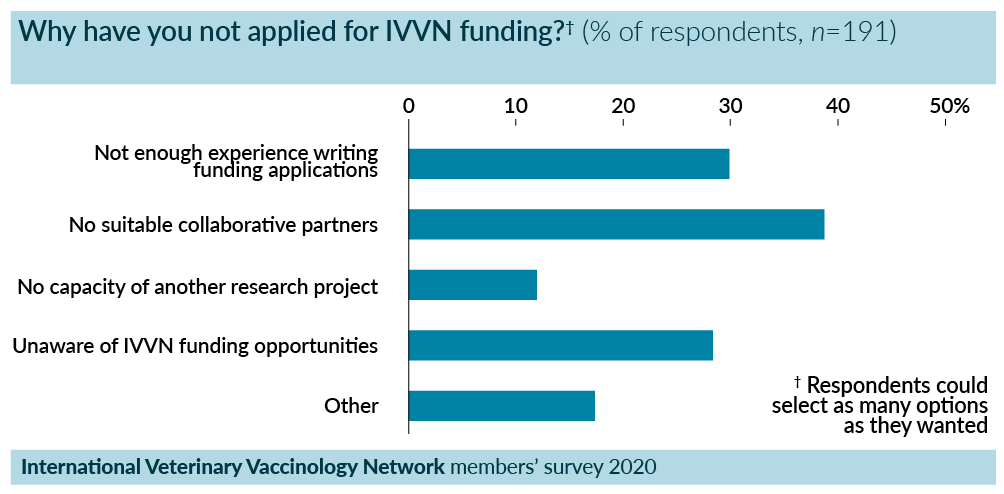
Figure 7 All responses to the question “How satisfied were you with the following aspects of the IVVN funding application process?” shown as percentages of those who were asked the question (the 191 respondents who had not applied for IVVN funding).
Which current Network activities do members value?
We were interested in finding out which of the Network’s current activities and opportunities members liked and would like to see us continuing to offer (Figure 8). The most popular option among respondents was IVVN-organised meetings, highlighting the value of the ‘networking’ aspect of membership. Sadly, the 2020 IVVN annual conference has been postponed because of the COVID-19 pandemic, but it will hopefully return in 2021 to give members the opportunity to meet and discuss ideas. Catalyst funding was also popular, with 68% selecting this option, and 48% said they valued the monthly newsletter.
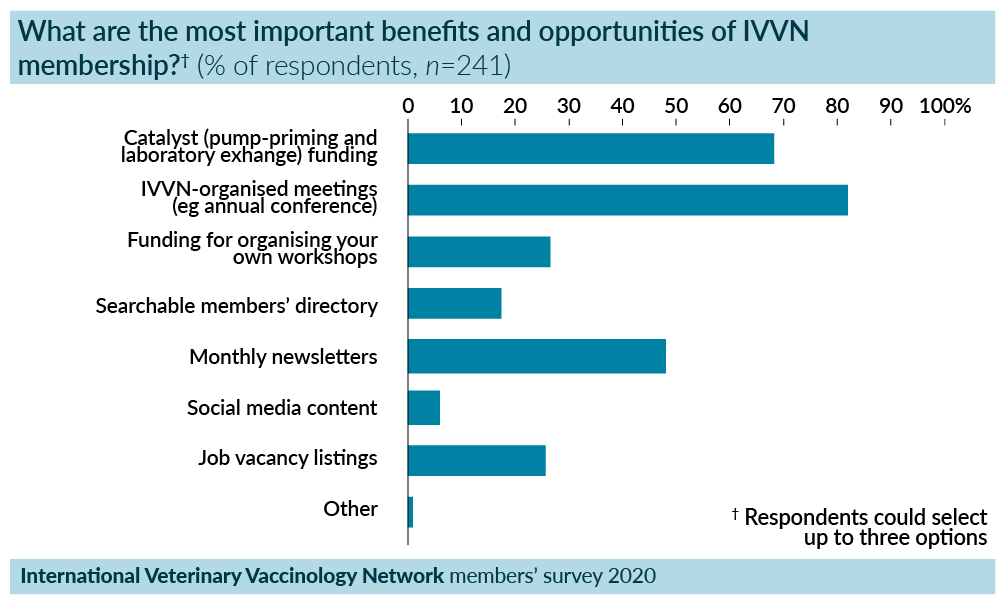
Figure 8 All responses to the question “What are the most important benefits and opportunities of IVVN membership?” shown as percentages of the total number of respondents (241).
The newsletter was also the main way respondents said they found out about the IVVN’s current activities, with 72% selecting this option (Figure 9). This is reflected in the increase in website traffic we see each month in the hours and days after each edition of the newsletter is sent out.
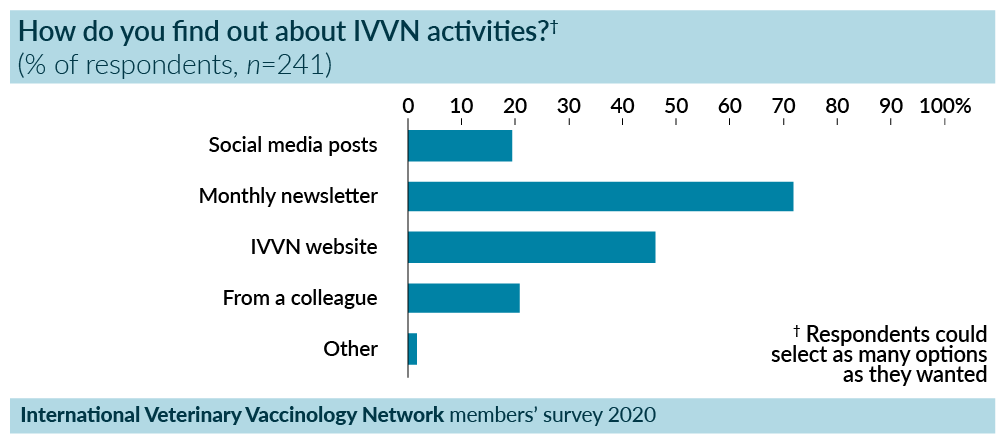
Figure 9 All responses to the question “How do you find out about IVVN activities?” shown as percentages of the total number of respondents (241).
Which additional opportunities should the IVVN offer?
Finally, survey respondents were asked about five possible future activities (Figure 10). 74% of respondents said they would like to see workshops in scientific skills (such as laboratory techniques and experimental design) being offered. This was even higher in LMIC respondents, with 80% selecting this option (Figure 11). We have previously discussed hosting webinars, either for training or research dissemination (or both), which could begin to address this need.
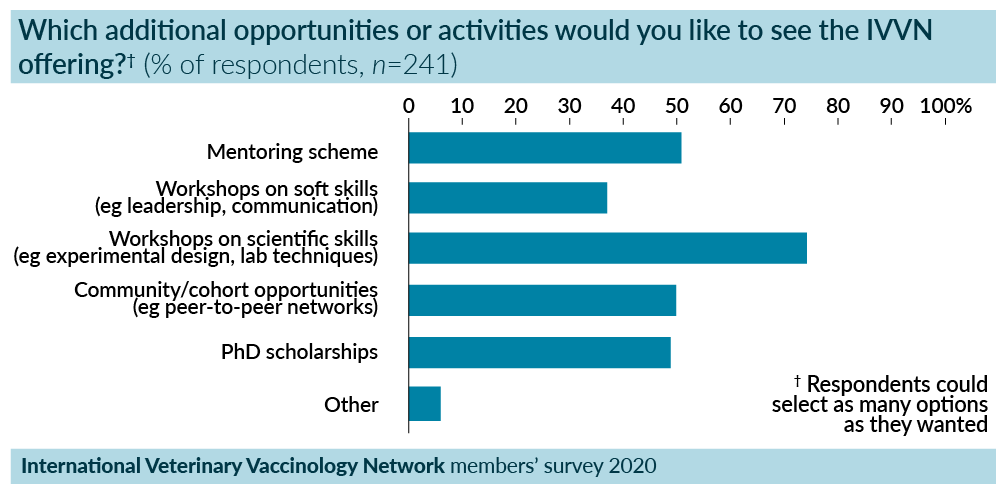
Figure 10 All responses to the question “Which additional opportunities or activities would you like to see the IVVN offering?” shown as percentages of the total number of respondents (241).
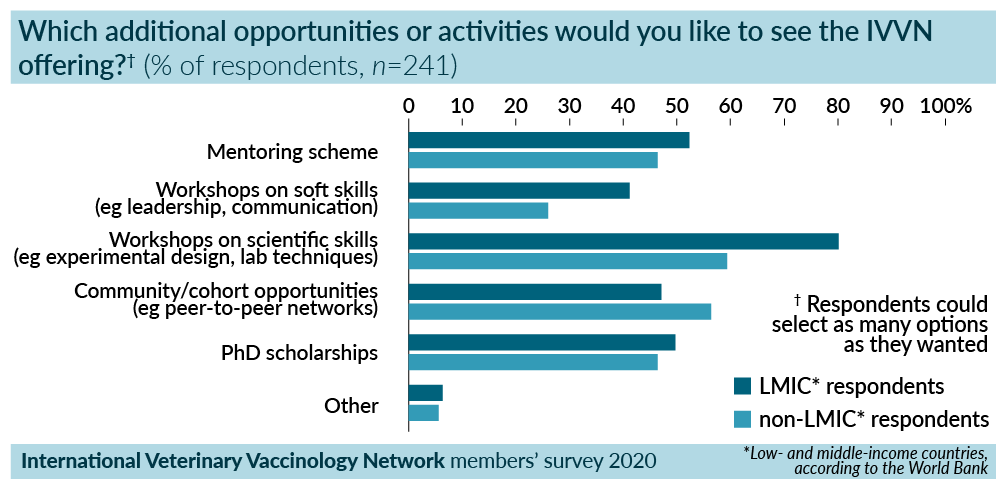
Figure 11 All responses to the question “Which additional opportunities or activities would you like to see the IVVN offering?” weighted according to whether or not respondents worked in an LMIC and shown as the percentage of respondents from each category who chose each option (n=172 in for LMICs, n=69 for non-LMICs).
The four other responses were also popular with respondents, with 51% wanting a mentoring scheme and 50% wanting to see cohort-based activities, such as peer-to-peer networks, being offered. 49% of respondents also wanted to see PhD scholarships offered by the IVVN. Workshops on ‘soft’ skills, such as communication and leadership, were more popular among respondents based in LMICs than those in HICs, with 41% of LMIC respondents interested in seeing these workshops being offered.
Conclusions
The overwhelming majority of the feedback we received from respondents was positive, with many using the ‘additional feedback’ opportunity to thank the Network for its work and to say that they valued being a member. Additional comments and suggestions offered by members included:
- More opportunities (job vacancy listings, training and scholarships) offered.
- Listing members’ achievements in the newsletter.
- Having regional or national representatives or coordinators for the Network.
- Better engagement in the United States and other countries outside Europe.
- Many members requested training opportunities and more funding for attending the IVVN annual conference.
